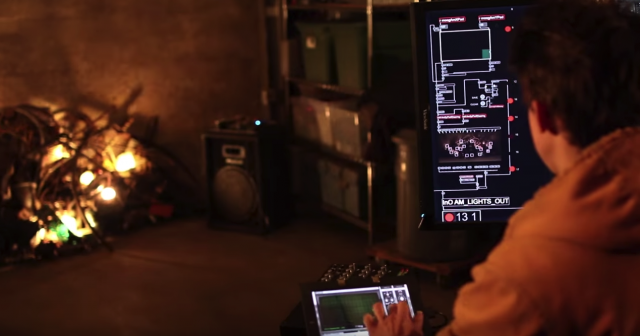Light organs have been in use for generations. But this is the first generation that has grown up in a world of image and sound in which expression across electronic media might seem simply second nature.
And oddly, as screens have become more ubiquitous, so, too, has thinking beyond them.
What we see here, then, isn’t a projection. It isn’t a display. It’s a big bundle of lightbulbs, making rhythmic poetry in off and on once connected to a jumble of wires. Play the Moog app Animoog on an iPad, and that mountain of electronic junk winks back at you like lightning bugs.
Going from screen (iPad) to pre-digital expression (lightbulbs) seems to make perfect sense.
This project of course isn’t alone. I’m actually hopeful that we’ll see experiments like this become more commonplace – that connected interactive lighting will be as common as VJing to a projector has been in the past.
In this case, the project comes from Moog’s home of Asheville and artist Chas Llewellyn. Chas is working with a computer running Cycling ’74’s graphical creation tool Max/MSP to translate music notes into lights. Max, then, is an interactive accompanist, containing the logic of how to convey the ideas of the musical performance in dances of light.
Full description:
Sculptor / programmer / interactive interface designer, Chas Llewellyn, explores the form and function of a large-scale light sculpture he designed using Moog Music’s Animoog app as the control source. From his former Wedge Studios workspace in Asheville’s River Arts District, Chas details the multiple electronic communication protocols that he integrated into the final working installation.
Thanks to the fine folks at Moog for sharing this, and their excellent iOS synthesizer.
Animoog | Interactive Interface
